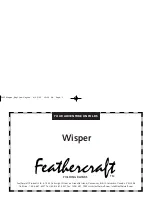
27
CONTROLS, COMPONENTS AND
INSTRUMENTS FUNCTIONS
1) Safety Lanyard
(engine cut-off cord)
The safety lanyard cap should be se-
curely snapped onto its post to be fully
operational.
Pulling the safety lanyard cap from its
post stops the engine operation.
Attach the safety lanyard to the opera-
tor’s Personal Flotation Device (PFD)
and snap the cap to the post to be able
to start the engine.
Two short beeps indicates the system
is ready to allow engine starting. Oth-
erwise, refer to the TROUBLESHOOT-
ING section for the coded signals chart.
1. Safety lanyard cap on the post
2. Safety lanyard secured on operator’s PFD
Always ensure safety lanyard is not
left on its post after engine is stopped.
If so, 2 very short beeps every 3 sec-
ond interval will sound for 25 minutes
to remind you to remove it. After-
wards, the beeps will stop.
IMPORTANT:
Leaving the safety lan-
yard on its post when engine is not
running will slowly discharge the bat-
tery.
Digitally Encoded Security
System (DESS)
The safety lanyard cap specifically con-
tains an electronic circuit that gives it
a unique electronic serial number. This
is the equivalent of a conventional key.
This safety lanyard cannot be used on
another watercraft and conversely, the
one from another watercraft cannot be
used on your watercraft.
However, the DESS brings a great flex-
ibility. You can buy an additional safety
lanyard and have it programmed for
your watercraft.
To have additional safety lanyard, refer
to an authorized Sea-Doo dealer.
WARNING
While engine can be stopped us-
ing the engine start/stop button,
good habits recommend that the
safety lanyard also be disconnect-
ed when stopping.
2
F18L0QY
1
WARNING
Should the engine be stopped,
wa-
tercraft
directional control is re-
duced. Always disconnect safety
lanyard when watercraft is not in
operation in order to prevent acci-
dental engine starting or to avoid
unauthorized use by children or
others or theft.
smo2002-003_a.book Page 27 Friday, October 12, 2001 2:04 PM
















































